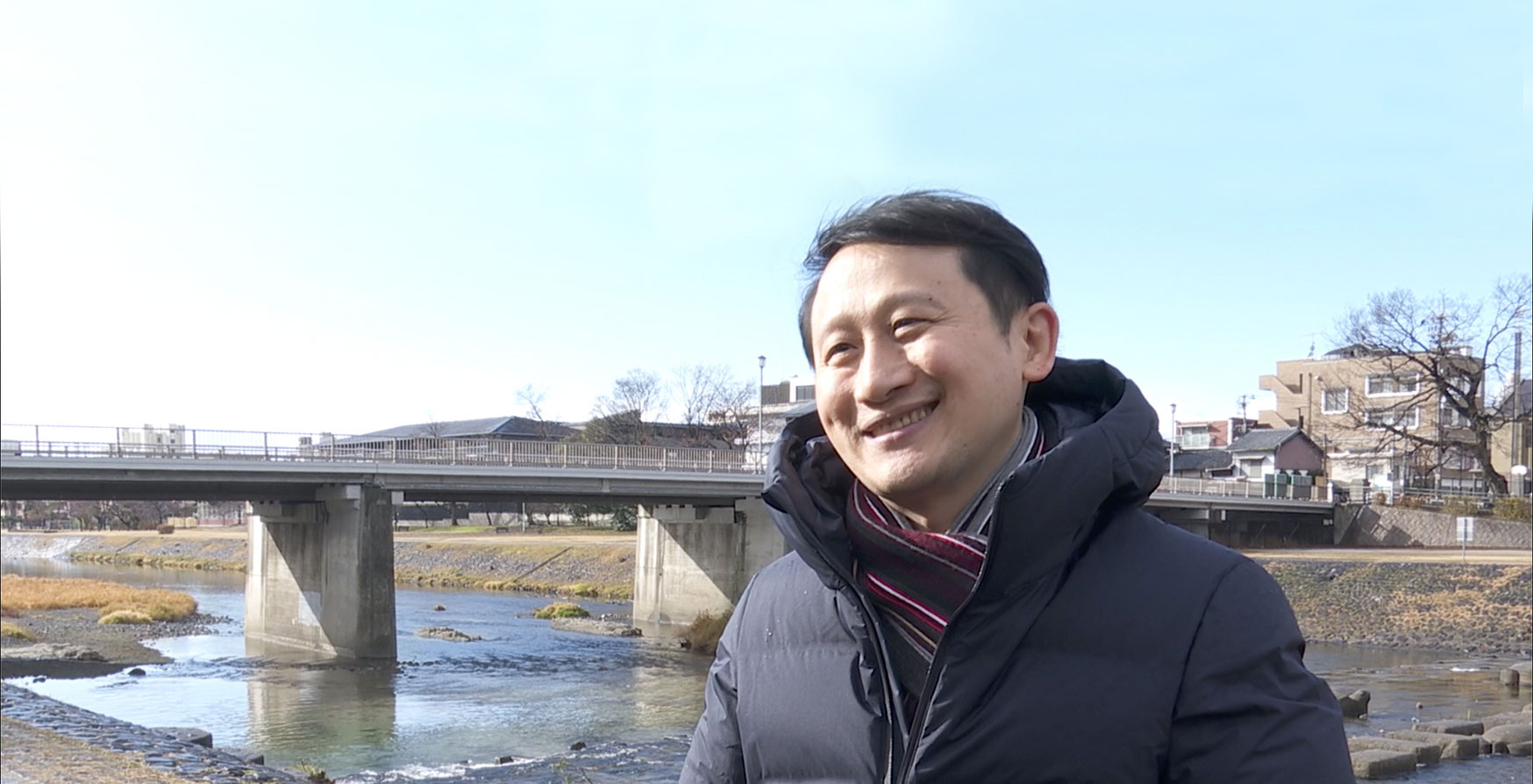Walking to where the river ends
I sat and watched the clouds rise
By chance I met an old man in the forest
We talked and laughed
And forgot when it was time to go home1
Introduction
This video’s title is inspired by the poem above, which was written by Wang Wei, one of the Tang Dynasty’s greatest poets. Throughout my academic journey, I have appreciated and absorbed a dazzling array of streams of knowledge, both with friends and strangers. As I walked along those rivers, I have continually felt humbled by them. Yet, it is very unlikely that I could ever reach even one of those rivers’ ends.
Trajectory
By and large, I have located my research at the intersection of migration study and border study. Since my journey to the Thai-Myanmar borderlands and war zones deep inside Burma/Myanmar in 2000, it has become imperative for me to discern the (existing) power relations that have rendered many (forced) migrants vulnerable and/or expendable2. As a philosophically-inclined person (for better or for worse), I have often found myself asking very basic questions regarding the kaleidoscopic transformations of both the spaces and the lives in the borderlands that I have been involved, by having the intertwining relations of four basic notions – violence, difference, marginality, and temporality – as a starting point. My research journey has, therefore, blurred different genres of various disciplines of the human sciences: especially political science, philosophy, anthropology, and history.
As a political theorist by training, I constantly explore new frontiers of “the political” – especially those which concern human fragility – together with searching for new ways of theorizing/philosophizing about them. In effect, my research has predominantly been to create a fieldwork-inspired political theory, combining it with conventionally textual theorization/philosophization.
When opportunities arose, I, at times, found myself being a part of those who intervened in such frontiers – manifested in the “practical world,” as it were. For instances, I have been working with the civil society along or related to the Thai-Myanmar borderlands, including teaching in a “refugee camp” for three years while also teaching at Thammasat University in Bangkok. At other times, I was part of a group of health workers and scientists who were eradicating malaria. All of these I did and have learnt from those rivers of knowledge – often, until I “forgot when it was time to go home.”
Literatures
I) Blurring Genres:
• 2006. “Taking Flight in Condemned Grounds: Forcibly Displaced Karens & the Thai-Burmese In-between Spaces,” Alternatives: Global, Local, Political. 31/4 (October): 405-429.
Based on my fieldwork in Burma/Myanmar’s war zones at the beginning of 2001, this article highlights an intricate nexus between voice and territoriality. Methodologically, it weaves together philosophy and political theory with ethnography, by drawing especially from Aristotle, Giorgio Agamben, Jacques Rancière, Gayatri Spivak as well as three anthropological topics, i.e., an anthropology of border zones, an anthropology of state terror, and an anthropology of displacement and refugees.
• 2019. “A Journey of Animus?: Christianized Karens and Recollections of Karen-Burman Animosity,” in Nabil Chang-Kuan Lin (Ed.). Exploring Religio-cultural Pluralism in Southeast Asia: Intercommunion, Localization, Syncretisation and Conflict. (Tainan City, Taiwan: Center for Multi-cultural Studies, National Cheng Kung University). Pp. 289-3353.
This article portrays the becomingness of the Karens in relation to the Burmans. It traces the former’s becomingness when they were not hegemonic: how they became known as an indigenous ethnic group; and how they later became a nation. To reach such a goal, the article first lays bare the instrumental discourses that essentialized the Karens as a unified indigenous ethnic group. Secondly, the article articulates Walter Benjamin’s historiography as well as his treatment of the nexus between danger and actuality. In this light, from this piece’s beginning until the end, I deploy a series of montages to narrate or theorize the politics of animus, by creating “a particular perspective of specific historical events, which is possible to interpret in any moment anew.”4 Such deployment is quintessentially Benjaminian: it is part of “the techniques of imagistic construction and composition.”5 In the third place, after discussing Jacques Rancière’s “the political,” the article narrates both an exemplary event of Karen subjectification and the conditions that enabled them to subjectify themselves as a nation. Images deployed herein, therefore, are both images of danger and images of hope.
• 2019. Decha Tangseefa, Monthathip K, Tuenpakdee N et al. “Nine Dimensions”: A multidisciplinary approach for community engagement in a complex postwar border region as part of the targeted malaria elimination in Karen/Kayin State, Myanmar,” [version 2; referees: 2 approved] Wellcome Open Res, 3:116 (https://doi.org/10.12688/wellcomeopenres.14698.2)
This article evinces social scientific research conducted to develop a conceptual framework used for community engagement (CE) activities in the Targeted Malaria Elimination (TME) program, as a cross-border operation in Karen/Kayin State, Burma/Myanmar. Conducting CE for the TME program was immensely complicated in Karen/Kayin State because of three key realities: heterogeneous terrains, a post-war atmosphere and cross-border operations. These three key realities constituted the nine dimensions, which proved integral to health worker success in conducting CE: : i) history of the people; ii) space; iii) work; iv) knowledge about the world; v) intriguing obstacle (rumour); vi) relationship with the health care system; vii) migration; viii) logic of capitalism influencing openness; and ix) power relations.
Like other research projects that I have been involved with, this one also prioritized fieldwork. Yet, the set of epistemological strategies deployed in this study differs greatly from my other projects. While I have always characterized myself as a poststructuralist, working with scientists – who are by default empiricists – on CE to battle against malarial drug resistance meant that negotiations regarding both the research design and the research narrative were unavoidable.
• 2020. แสง น้ำ และ รวงข้าว: ทักษะวัฒนธรรมเพื่อความเป็นอื่น Saeng nam lae ruangkhao: thaksawatthanatham phuea khwampenuen (Light, Water and Rice Stalk: Cultural Fluency for Alterity). Second Edition. Bangkok: Kobfai Publishing Project, Foundation for Democracy and Development Studies. (Forthcoming).
After a few decades of a relatively peaceful atmosphere in Thailand’s deep south, the theft of guns from a military weapons depot on January 4, 2004 commenced a new dawn of violence. The fire of violence has since continuously flared, at times burning fiercely. Within this context, in 2008, Professor Chaiwat Satha-Anand and Professor Paritta Chalermpow Koanantakul together initiated, and later institutionalized, a project called “thaksawatthanatham” or “cultural fluency.” Funded by the Princess Maha Chakri Sirindhorn Anthropology Centre and successively led by a few dedicated managers, the project has organized various activities, including trainings, youth camps for victims of violence, short film competitions for young film makers, board game development, and a few research projects. All these activities have involved peoples of different identities and have engaged both bureaucrats (civilians, soldiers, and police) and members of the civil society (both youngsters and adults). Over the past twelve years, the discourse of thaksawatthanatham has steadily gained currency in Thai society.
Light, Water and Rice Stalk is the project’s conceptual book that attempts to answer one basic question: How should one understand coexistence amidst cultural differences? This transdisciplinary text weaves together etymology, political theory, anthropology, psychology, and philosophy (combining, predominantly, a few strands of poststructuralism with those of ancient Chinese philosophies). The book’s nonessentialist treatment of identity formulates “thaksawatthanatham”—“cultural fluency”—in such a way as to distance the discourse from the conventional treatment of this notion propagated in the mainstream and global literatures of business (management), law and psychology.
II) Creating Concepts:6
• 2010. “Imperceptible Naked-lives: Constructing a Theoretical Space to Account for Non-statist Subjectivities,” in Shampa Biswas and Sheila Nair (Eds.) International Relations and States of Exception: Margins, Peripheries and Excluded Bodies. (New York: Routledge). Pp. 116-139.
This article quilts together theoretico-philosophical discursive fields to form a discursive space to address the displaced Karens’ political nakedness. Following the writings of Giorgio Agamben and Jacques Rancière, this article constructs the concept of “imperceptible naked lives” as an apparatus of recognition. Whereas, the idea of “naked life” is Agambenian7, the concept of “imperceptible” is formulated from Rancière’s articulation of “the political.” Agamben’s concept of “naked life” illuminates the interlocking relations of sovereign power and human life, and, hence, enables one to discern the state terror inflicted upon the existence and bodies of the displaced Karens. Rancière’s conception of “the political” allows one to understand that the struggles of forcibly displaced peoples – the practices of enunciating and/or demonstrating themselves as qualified political subjects – are the constructions of political spaces, even if they are labeled as illegitimate, and often “illegal,” by the state.
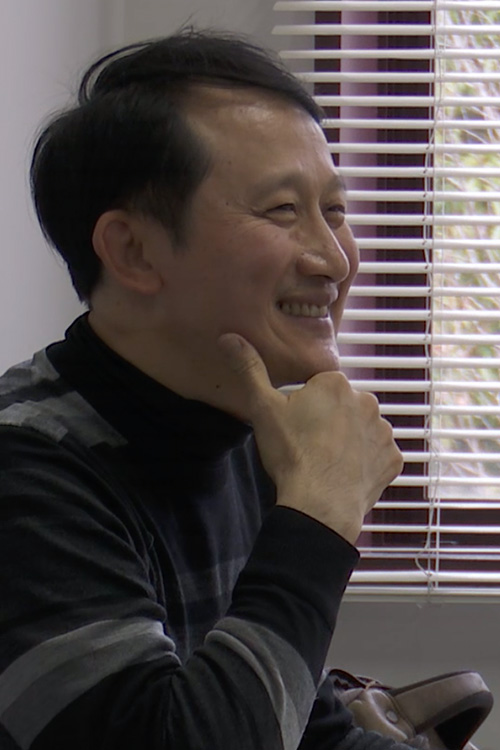
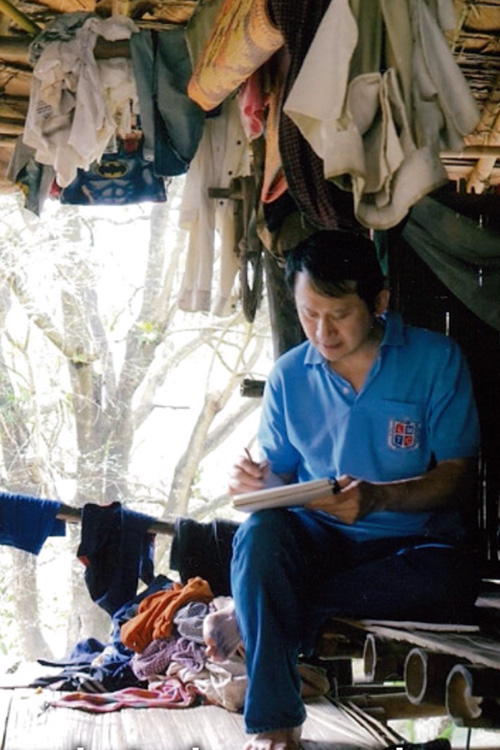
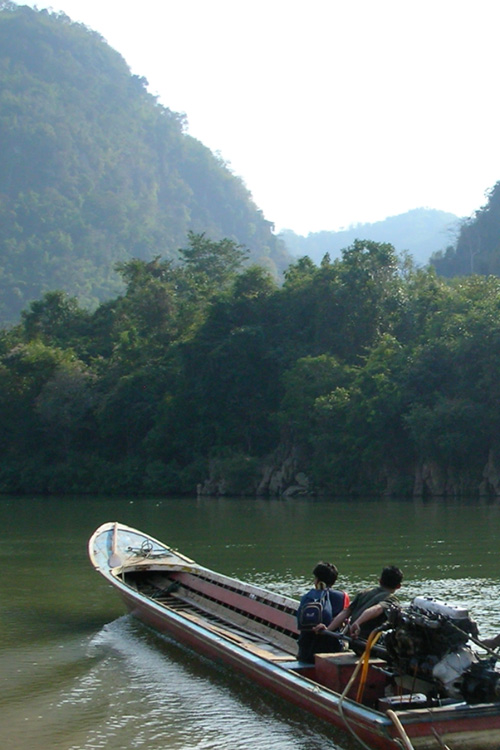
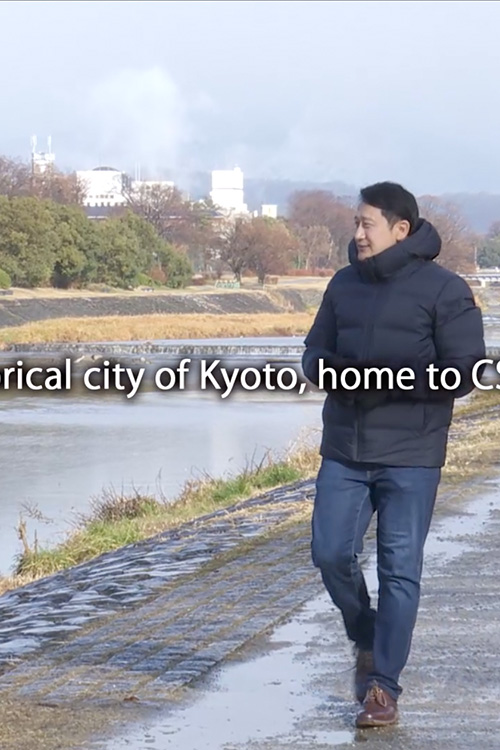
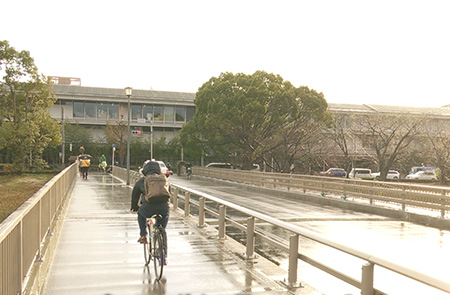
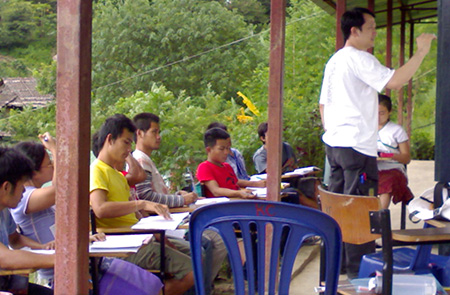
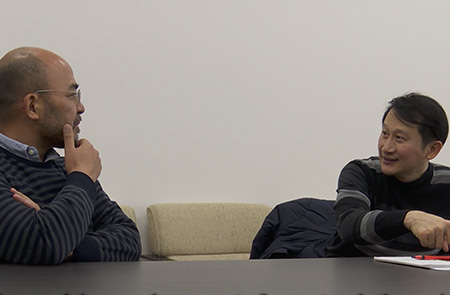
Endnotes
1 This version is translated by Mary de G. White, in Wang Fang yu et al. (1980: 67).
I owe a debt of deep gratitude to Brain Richardson who left his marks in the earlier drafts of this writing. Some still images inserted in this VDO belong to the following photographers to whom I feel very grateful: Chonlada Sittiboot, Krishna Monthathip, Naruemol Tuenpakdee, Phianphachong Intarat, Prapatsorn Misa, Praphaiphit Olanwat, Suphak Nosten, and Warapree Tangseefa.
2 It must be noted that when the State Law and Order Restoration Council (SLORC) changed the country’s official name to “Myanmar” in 1989, it also_promoted the usages or spellings of many other names in styles closer to the Burmese language, including those of ethnic nationalities. In both “Expository Writing” and “Introduction of Literatures,” the Republic of the Union of Myanmar is called “Burma/Myanmar” in order to acknowledge the official name, Myanmar, as well as to emphasize traces of the successive Burmese juntas’ attempt to Burmanize the whole social fabric of this land that still has had impacts in quite a few communities in the country, including along the Thai-Burmese/Myanmar borderlands. Yet, for reason of brevity, the term “Thai-Myanmar borderlands” is used throughout.
3 Due to a technical misunderstanding during the printing process, the reference list at the article’s end is incomplete.
4 Lindroos (1998: 48).
5 Gilloch (2002: 224).
6 By and large, the notion of what philosophy is by Deleuze and Guattari – “philosophy is the art of forming, inventing, and fabricating concepts” (1994: 2) – has inspired my philosophical journey.
7 In all my writings, instead of using the term “bare life,” I follow the translation of Vincenzo Binetti and Cesare Casarino (Agamben 2000) and use “naked life” throughout, except when citing passages from Homo Sacer: Sovereign Power and Bare Life (Agamben 1998). This is, as Binetti and Casarino emphasize, because the term “naked life” translates the Italian nuda vita, which appears not only in the subtitle of Agamben’s Homo Sacer: il potere sovrano e la nuda vita, but also throughout his work (see “Translators’ Notes” in Agamben 2000: 143, n. 1).
References
Agamben, Giorgio. 1998. Homo Sacer: Sovereign Power and Bare Life. Trans. Daniel Heller-Roazen. Stanford, California: Stanford University Press.
Agamben, Giorgio. 2000. Means without Ends: Notes on Politics. Trans. Vincenzo Binetti and Cesare Casarino. Minneapolis: University of Minnesota Press.
Deleuze, Giles and Félix Guattari. 1994. What is Philosophy. Trans. Hugh Tomlinson and Gramham Burchell. New York: Columbia University Press.
Gilloch, Graeme. 2002. Walter Benjamin: Critical Constellations. Cambridge, UK: Polity Press.
Lindroos, Kia. 1998. Now-Time/ Image-Space. University of Jyvaskyla, Finland: SoPhi.
Wang Fang yu, Susanne Gramham Storer, and Mary de G. White. 1980. Walking to Where the River Ends. Hamden, CT: Archon Book.

